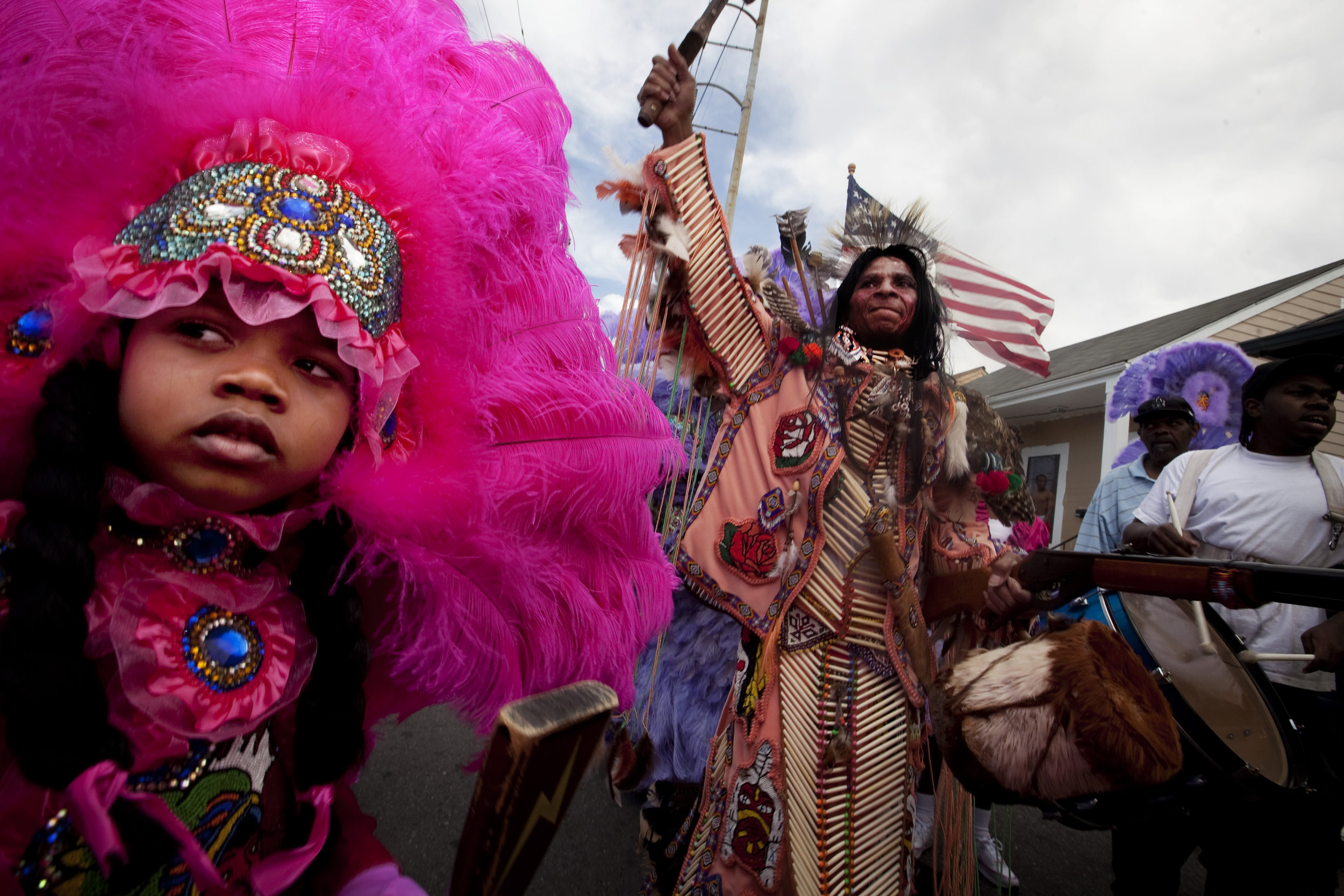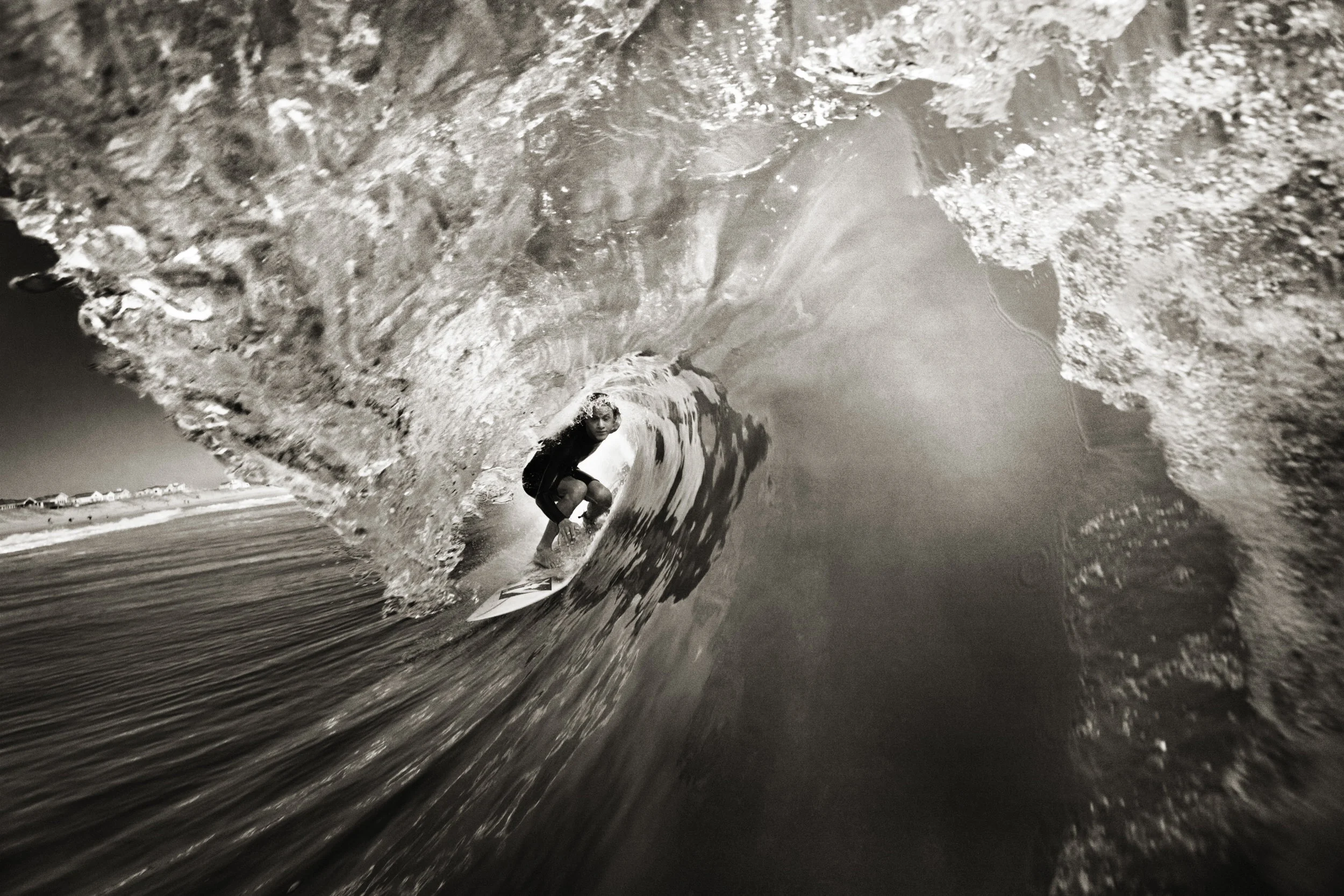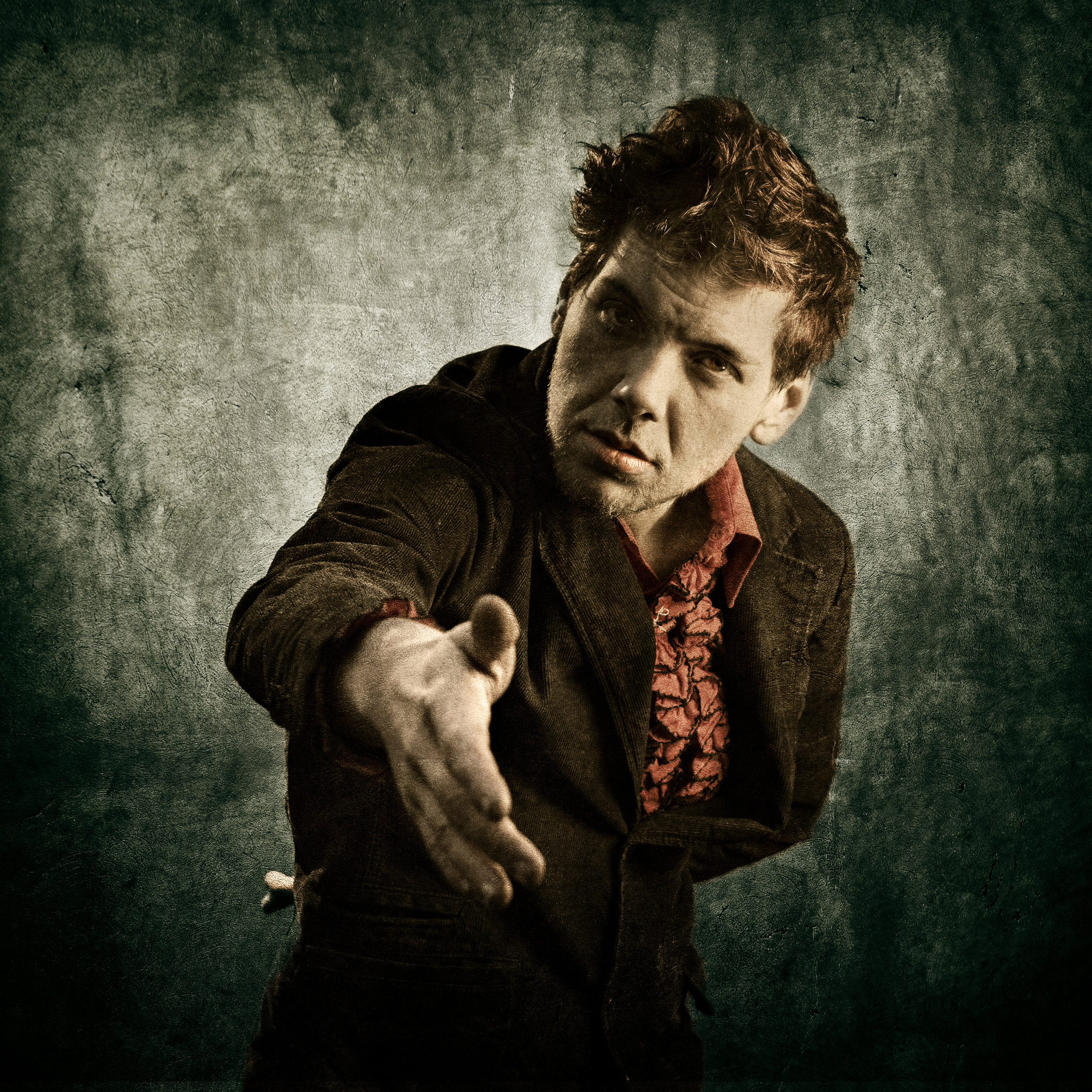This city won't wash away
It’s raining in New Orleans.
That shouldn’t come as any surprise; it rains all the time in Louisiana. But since I came down last week there has been the most incredible string of perfect days –- what the old black families call “SNOW” (“Sweet New Orleans Weather”): clear skies, daytime highs in the seventies, beautiful sunsets, cool nights–that it was easy to forget that this city ever experiences bad, not to mention extreme or dangerous, weather.
Now that the weather has turned, I’m looking out the window watching the drops bounce off the tree-leaves and pavement of North Lopez Street, and pondering the journey this town has taken over the last seven and a half years. Before Hurricane Katrina dealt its near-death blow, New Orleans was a forgotten backwater, a curious corner of America, a place people came to let their freak flags fly, a place with a rich cultural heritage that remained relatively unknown and misunderstood by the country at large. New Orleans was a caricature, a cartoon version of reality, a place lost in time. It was the place were they did that Mardi Gras thing and girls would flash their boobies if you threw them beads. It was the place that sounded like old jazz from the ‘40’s, the place that had that really lousy football team.
New Orleans was all this, to be sure, but it was much, much more. It was a city with deep and complex cultural roots, and a musical heritage like none other in the country. It was poor, run-down, and dangerous, but it was rich with small pleasures and a beautifully subversive sensuality; a place where fun, celebration and community held almost religious importance. It was, in many ways, a country unto itself, a world unto itself: seductive to the point of addiction for some, and strange to the point of repulsion for others. New Orleans was a place you either loved or hated, a place you either got or didn’t get. But most of all, New Orleans was a wellspring: a swampy, muddy, fecund fountain of culture, where a dozen worlds converged and bubbled over in an ecstatic celebration of life, death, food, drink, and sweet sweet music.
After Katrina, New Orleans became an island of woe, a ward full of shell-shocked citizens and abandoned houses. The saltwater flood strangled the unruly grass, the majestic oaks, and the sultry Spanish moss; and bereft of their habitat the birds and bees joined the human diaspora, leaving the place lifeless and eerily silent. The city was a dead zone, the floodwaters stinking in the summer heat, the dispossessed crying out to be rescued from soggy rooftops, sizzling overpasses, and a bombed-out stadium; and suddenly a nation who never paid much attention to the place was tuned in, day after day, to stories of despair and misery, of police brutality, rape, and looting; of governmental incompetence and municipal corruption; and poor black people begging for help. Conservative talk-radio hosts said, let them drown, let it wash away, nothing but a bunch of uneducated people who don’t know how to take care of themselves. The place is underwater. Let it wash away. Even National Geographic posed the question, “New Orleans: Should it Rebuild?”
How little they understood what was at stake.
The push-back was slow but deliberate, infused with the old Mardi Gras Indian “Won’t Bow Down, Don’t Know How” spirit. Writers who knew and loved the city churned out essays and books such as “Why New Orleans Matters” and “Do You Know What it Means To Miss New Orleans?”…Musicians, restauranteurs, hairdressers and religious groups held benefits, raised money; volunteer groups from Vermont to LA piled on buses and headed to the city to help in the cleanup and rebuilding. Aaron Neville’s cover of the Randy Newman song “Louisiana 1927” (“They’re tryin’ to wash us away, they’re tryin’ to wash us away”) became an anthem for the times, playing on radio airwaves across the country.
What those unfamiliar with New Orleans failed to understand was just how important the culture of the Crescent is to the soul of American culture at large, though its influence might be hidden and indirect. This is a hard thing to explain in a few sentences; it’s even difficult to explain in several hundred pages. But spend some time in this town, listen to the old blues and jazz and r&b tunes being broadcast reverently from the legendary WWOZ radio station as you drive down the wide, tree-lined avenues; listen to the Brooklyn-esque accents of the descendants of Irish and Italian immigrants who built half the city; walk down St. Charles Avenue and gawk at the Victorian mansions nestled in the shade of oak trees; pass a strutting black man on the street who nods his head in greeting and smiles as he says “All Right, All Right”….Hit Frenchmen Street on any given night of the week and hear the music spilling out of the clubs, from reggae to Dixieland jazz to bebop to salsa and even country and western; stop outside some random bar where someone is brewing up a crawfish boil, or selling tamales, or grilling ribs, while on a street corner a block down two teenage brass bands are having a sound-off, standing on opposite sides of the street trying to outdo each other in call-and-response; go a little further and see, in the alcove of a closed café, a rag-tag band of young minstrels, dressed like extras from “O Brother Where art Thou”, wielding banjos, violins, double-bass, and a muted trumpet, playing a strange but perfect mix of bluegrass, ragtime, and tango, while on the street a couple dances, stopping on their way to dinner to participate in the endless street life of this town…and ask yourself, can you think of another city in this country that has such a rich, natural outpouring of culture and soul? I challenge you to try.
In the years since Katrina New Orleans has gotten more of its due, as a new generation of hipsters, dreamers, and activists who came down to help, to support, to understand, has fallen in love with the place, and a new creative class has begun to migrate to the city, bringing with it an appreciation for the homegrown traditions that have been fermenting in this town for over 300 years. Novels like “Nine Lives” and “City of Refuge” have brought to life the drama and diversity of this town that has suffered and prevailed over so much, and the hit HBO miniseries “Tremé” has brought the sights, sounds, personalities, and tribulations of the city into Sunday-night living rooms across the country.
At the same time, those that knew her before the rest of us were paying any attention lament the loss of a Golden Age in New Orleans, a time and place removed from time and place, a sweet sultry pleasure-den where you could disappear for years and years and not regret one single moment of wasted time. Read André Codrescu’s “New Orleans Mon Amour”, and you will find yourself yearning for a place you never knew, and according to Codrescu, you will never know, because New Orleans will never be the same after Katrina.
To be sure, Codrescu is right in more ways than one. The back Lower Ninth was demolished. The Mardi Gras Indians, and the Social Aid and Pleasure clubs, despite receiving more exposure now than they ever have, have suffered major losses in their numbers as dispossessed black families have emigrated to Houston, Denver, Seattle, Boston, Baton Rouge, Chicago. Many of the working-class families who made New Orleans what it was lost everything in the flood, and having lived in the same houses for generations, had no insurance, no money to rebuild, no path to return home once the floodwaters had receded. The old New Orleans is lost. But the new New Orleans is brimming with hope and pride, and still looks reverently to its storied past, still carries on into the future with the same funky, devilish, dangerous soul that makes it such an iconic and beguiling city. It will not become a Disneyland replica of itself. It will not lose its soul to corporate interests wanting to capitalize on its “authenticity”. It will merely walk a second-line step into the millennium, singing the same tunes, perhaps with a different lilt, but with the same sense of pride. There may be a lot more white kids in town these days. And they may be a little too enamored of all this Creole culture, a little too quick to want to immortalize it with photographs and video, a little too anxious to be on the inside of the experience, anxious to hurry up and become jaded so they can really fit in, too eager to get the tattoos and adopt the streetwise walk…but still, they showed up. They caught the spirit. And they dug their hands into the muck to help New Orleans revitalize itself.
As one with little direct experience of the city that was before the flood, I can only speak to what remains, and to what promises to be. And in that regard, I see a lot to be hopeful about. New initiatives are ushering in innovate charter schools; urban agriculture and farmers’s markets are greening the city; plans are underway to set up New Orleans as a tech center, bringing in much-needed employment opportunities to a town that mostly consists of artists, musicians, cooks, and bartenders. Sounds of construction and renovation resound in every quarter. Street by street, brick by brick, things are coming together.
New Orleans today is a city on the rise, with an incredibly fertile arts scene, a rebounding housing market, and a lot of optimism. Every time I come back here, there are more freshly painted houses, more new restaurants, more newly-paved streets, and a little more traffic. Don’t get me wrong, there is still an incredible amount of blight, especially in the ninth ward and the eastern part of the city; but even those neighborhoods have pockets of new growth, as artists, writers, musicians, and others who are no longer able to afford the high rents in the French Quarter and the Marigny are buying old shotgun houses for cheapl and fixing them up into beautiful bits of gingerbread along otherwise shelled-out streets.
Yes, the crime is bad. Bad, brutal, and systemic. This is not a city for the faint of heart. But just maybe the renaissance in education and community-mindedness will eventually transform the dismaying statistics and nightly news flashes of domestic abuse and robbery. It’s not far-fetched to believe they will.
Earlier this week I wandered the riverside end of the Lower Ninth Ward with my friend Joe Crachiola, a photographer and musician who recently bought a house in the neighborhood for a price too low to mention. “I love it here,” he told me as we walked down to view the old riverboat houses and walk along the levee. “It’s so quiet, so peaceful. I don’t feel like I need to go anywhere.” We passed plenty of abandoned houses, but there were just as many freshly-painted, brightly-colored bungalows, with a nice mix of people either working on their houses, walking dogs, or just stopping for conversation. It really was quiet. Like, living in the country kind of quiet.
I came down here to participate in PhotoNOLA, a festival sponsored by the New Orleans Photo Alliance. Unfortunately I’ve been running myself so ragged over the past couple of months that I fell ill Saturday night and had to cancel my last two reviews on Sunday morning. Since then I’ve been recuperating in mid-city and enjoying a sudden feeling that there’s nothing in particular that I have to do right now. And even though there’s so much happening here all the time, from lectures at Tulane to killer bands playing at Tipitina’s to gallery openings and farmer’s markets, New Orleans is also a great place to do absolutely nothing at all. So forgive me if my photo selections are a little paltry. I just couldn’t be bothered to get off my ass and hunt down scenes. I was too caught up in recuperation and reverie.
It all ends tomorrow, though. Just as I’ve gotten my energy back and have started to wander around town a bit, it’s time for me to leave. And I absolutely don’t want to go. I still haven’t reached that point where I’m ready to sell my house on the Outer Banks and move down here, but I can tell you, I’m tempted, sorely tempted. If only the summers weren’t so damn long and miserable.
Today New Orleans has a new anthem, Steve Earle’s “This City”. Written after Katrina and featured in the HBO series Tremé (in which Earle plays a wise old street musician) the song exemplifies the spirit of New Orleans today: mournful of its past, quietly hopeful about its future, but bound and determined to survive and thrive and keep the spirit and soul of its forbearers alive. There is a pride, hope, and reverence here that refuses to die, refuses to bow down, refuses to be washed away.
May it always be so.
“This City” by Steve Earle:
This city won’t wash away
This city won’t ever drown
Blood in the water and hell to pay
Sky tear open and pain rain down
Doesn’t matter ’cause come what may
I ain’t ever gonna leave this town
This city won’t wash away
This city won’t ever drown
Ain’t the river or the wind to blame
Everybody around here knows
Nothin’ holdin’ back Ponchartrain
Except for a prayer and a promise’s ghost
We just carry on diggin’ our graves
In solid marble above the ground
Maybe our bones’ll wash away
But this city won’t ever drown
This city won’t ever die
Just as long as her heart beats strong
Like a second line steppin’ high
Raisin’ hell as we roll along
Gentilly to the Vieux Carre
Lower Nine, Central City, Uptown
Singin’ Jacamo fee-nah-nay
This city won’t ever drown
Doesn’t matter cause there ain’t no way
I’m ever gonna leave this town
This city won’t wash away
This city won’t ever drown
















